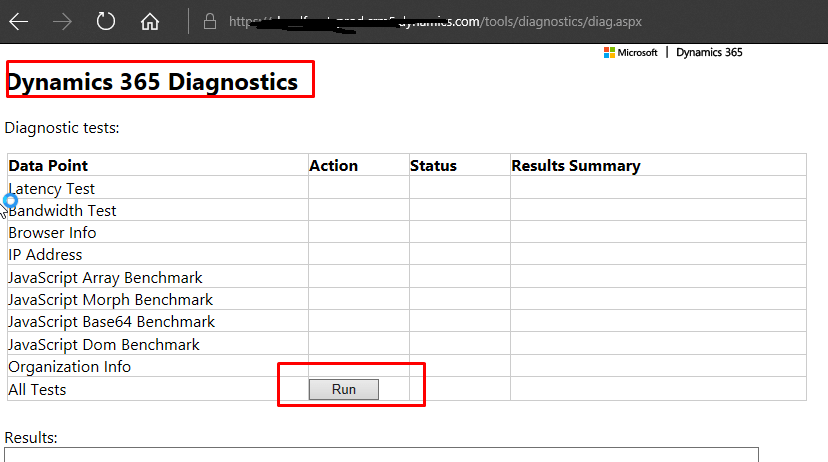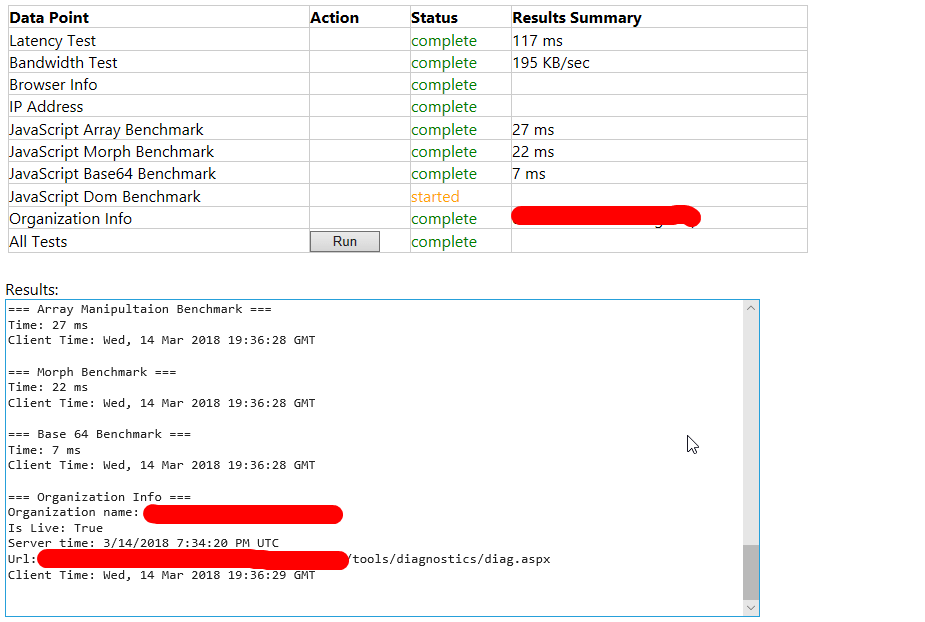Dynamics 365 Client Diagnostics
Main cause of Performance Issues:
Bandwidth and latency are the primary characteristics which affects the performance of Dynamics 365 client application on the web browser and other apps like D365 for Outlook
It is also important to note that even if there is high bandwidth, the performance may be still slow because of latency issues. Let us define these two terms:
- Bandwidth is the width or capacity of a specific communications channel.
- Latency is the time required for a signal to travel from one point on a network to another, and is a fixed cost between two points.
An application designed to send a request, wait for a reply, send another request, wait for another reply, and so on, will wait at least five seconds for each packet exchange, regardless of the speed of the server.
How to Check Latency in D365 Online Applications:
Dynamics 365 includes a basic diagnostic tool that analyzes the client-to-organization connectivity and produces a report. To run the Dynamics 365 Diagnostics tool, follow these steps.
- On the user’s computer or device, start a web browser, and sign in to a Dynamics 365 organization.
- Enter the following URL, https://myorg.crm.dynamics.com/tools/diagnostics/diag.aspx, where myorg.crm.dynamics.com is the URL of your Dynamics 365 (online) organization.

- Click Run
- You can see the results like below:

What to make of this?
The report displays a table with test and benchmark information. Of particular importance is the Latency Test row value.
This value is an average of twenty individual test runs. Generally, the lower the number, the better the performance of the client. Although users may receive a satisfactory experience by using connections with more latency, for best application performance we recommend that the value be 150 ms (milliseconds) or less
Other Notes:
One of the reasons of high latency is that sometimes D365 tenant is setup in a region far from the home region. For e.g. Customers in USA using D365 which is setup in Australia. This will result in high latency for the end users. In these scenarios where most of the customers are in USA, you can contact Microsoft Support to help move your tenant to USA or nearby region.
Best practices for improving application performance
- Maximize how quickly your forms load. More information: Optimize form performance
- Make sure you aren’t using legacy form rendering, which can make forms take significantly longer to load. More information: System Settings dialog box – General tab
